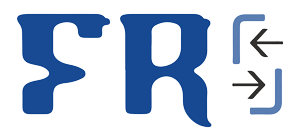Cross docking literally means “crossover, exchange” and is a supply chain management strategy. Specifically, it is an adjusted distribution strategy that coordinates the entry and exit of goods to avoid storage. With cross docking, the warehouse is transformed into a transit area: incoming goods are unloaded at the entry dock, sorted within the area as quickly as possible, and transferred to the exit dock to be shipped to the customer. The “cross”, the exchange, ideally takes place between the supplier and the carrier, although in reality, in the cross docking area, the goods are not only classified, but also controlled.
What is cross docking?
Cross docking is a Lean Logistics strategy: it responds to the logic of “lean production” because it avoids overloads (production, labor, demand) and aims to avoid the main waste identified by a Lean Manufacturing system. First, overproduction relative to demand. This is followed by: the production of stocks, which remain idlers “waiting” to be processed or sold and take the risk of deteriorating or losing quality; damages related to costs of defects and rework; material handling in non-optimized spaces; inefficient processes.
Advantages of cross docking
In cross docking, we speak of merchandise because the strategy is potentially applicable to both components/raw materials and finished products. Incoming goods are unloaded on one side of the transit zone, at the entry gates, and then moved to the opposite side, at the exit gates, to be loaded and shipped to their destination.
- The goods remain for the shortest time possible within the zone: they are received, their quality is controlled at the entrance, they are classified, grouped, their quality is controlled at the exit and they are sent.
- The transit is recorded administratively, but the merchandise is not stored, distributed or deposited: therefore, the picking phase is not necessary (removal of individual pieces from the shelf to prepare the order for dispatch).
- Cross docking, a lean strategy, allows the company to “lighten” many costs, which are eliminated or minimized. In the first case, these are the costs of overproduction of the goods to be stored, the costs of reprocessing the goods “on hold” due to loss of quality, the costs of managing the “traditional” warehouse, the costs of rack placement and removal. In the second case, the costs of handling the merchandise are minimized, that is, the costs of labor and transport, breakage, loss and theft of the merchandise itself.
- Lean production is based on “just in time”, which means that it will be produced only when necessary, based on customer demand. An “on demand” system, which minimizes the risk of fluctuation in demand and the damage caused by an incorrect forecast of its volumes: cross-docking orders are sales already made.
If you want to speed up the management of your warehouse in the best possible way, do not hesitate to contact FR Servicios Logísticos, where we take care of the entire logistics process and specialize in cross docking. We will take care of managing your cross docking operations so that you can plan supplies or manufacturing for your specific clients with a greater time margin, ensuring the service that your client needs.


